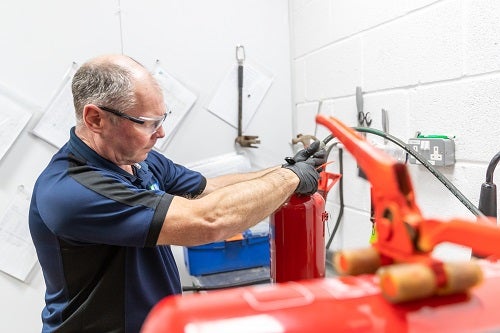False fire alarms are a recurring issue that poses significant risks to people and buildings. Understanding the causes and consequences of false alarms is crucial for maintaining the efficiency of emergency services and protecting individuals.
In this blog post, we'll explore common false fire alarm causes, the impact of hoax alarms on emergency services, and effective methods for reducing their occurrence.
What are false fire alarms?
False fire alarms happen when a fire detection system signals a fire or smoke when there is no actual threat. Several factors can trigger these alarms. Most of these factors pertain to one of the three following categories:
1. Apparatus issues
These false alarms result from technical malfunctions within the fire alarm system, such as sensor glitches or electrical issues. Regular maintenance and timely system checks are crucial in preventing such malfunctions.
2. Good intent
Well-intentioned individuals may trigger false alarms by overestimating the fire danger of a situation.
3. Malicious alarms
Deliberate false fire alarms, often termed as hoaxes, pose a severe threat. These acts can divert emergency services from genuine incidents, putting lives and property at risk.
What apparatus issues could cause a false fire alarm?
- Dust and dirt buildup
The build-up of dust and dirt in smoke detectors can result in false alarms. Regular maintenance and cleaning are essential to prevent this issue.
- Cooking fumes
During high-temperature cooking, fumes may trigger smoke detectors near kitchens. Proper placement and ventilation can help mitigate this cause.
- System malfunctions
Faulty wiring, sensor issues, or malfunctioning components within the fire detection system can lead to false alarms. Regular inspections and prompt repairs are crucial.
- Environmental factors
Changes in environmental conditions, such as humidity and temperature fluctuations, may influence the sensitivity of smoke detectors.
Good intentions - false fire alarms
Unlike malicious hoaxes or technical malfunctions, these incidents stem from individuals genuinely trying to do the right thing.
In these situations, there isn't a clear guidebook that tells you when to sound the alarm and when to handle the situation yourself. However, erring on the side of caution is often the wisest course of action. After all, it's better to involve the necessary authorities than to regret inaction later.
Malicious alarms - how do hoax fire alarms impact emergency services?
Hoax fire alarms, intentionally triggered by individuals with no genuine emergency, have severe consequences for emergency services. False alarms divert crucial resources away from real emergencies, putting lives at risk.
According to the 2023 UK Government report on fire and rescue incident statistics, fire and rescue services responded to 622,173 incidents in England. False alarms accounted for a significant portion of these incidents, totalling 244,341, indicating the need for effective preventive measures.
Of these false alarms:
- 167,568 (69%) were traced to apparatus
- 70,355 (29%) were due to good intent
- 6,418 (2.6%) were malicious false fire alarms
Responding to a hoax alarm not only wastes time and money but also strains the emergency services. Furthermore, it fosters complacency – frequent hoax alarms may lead people to assume all alarms are false unless explicitly informed otherwise.
How can false fire alarms be reduced?

1. Regular Maintenance: Implementing a routine maintenance schedule for fire detection systems ensures that sensors are clean and functional, reducing the likelihood of false alarms.
2. Proper Installation: Ensuring correct installation of smoke detectors, considering factors like proximity to kitchens and environmental conditions, minimises false alarms.
3. Education and training: Providing education on the consequences of false alarms and offering training to staff on proper system use can help prevent accidental activations.
4. Technology upgrades: Investing in advanced fire detection technology with improved sensitivity and reliability can significantly reduce false alarms.
In summary
Reducing false fire alarms, whether due to technical malfunctions, good intent, or malicious intent, demands a proactive and informed approach.
By understanding the causes and consequences of false alarms and implementing preventive measures, we can collectively work towards a safer environment for all.




